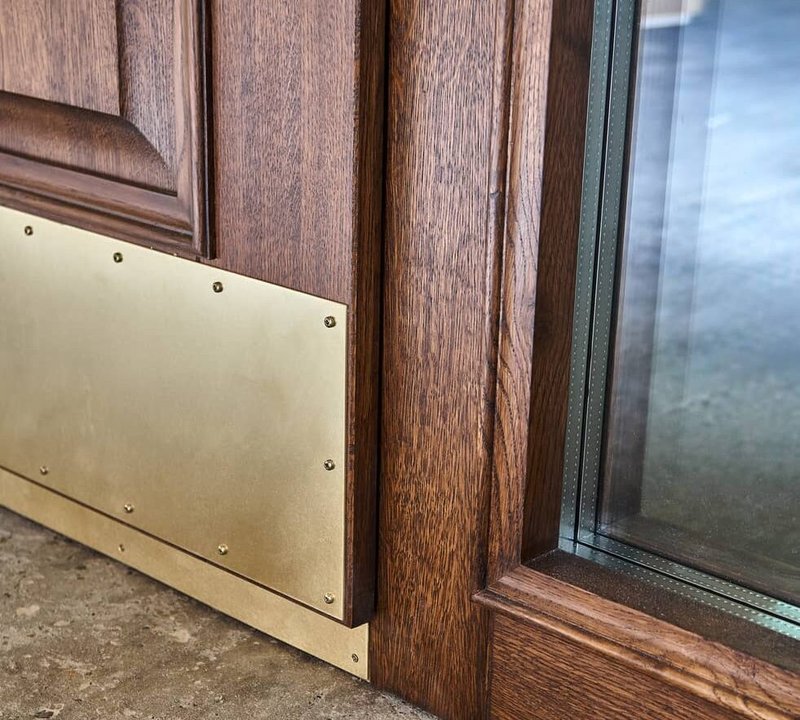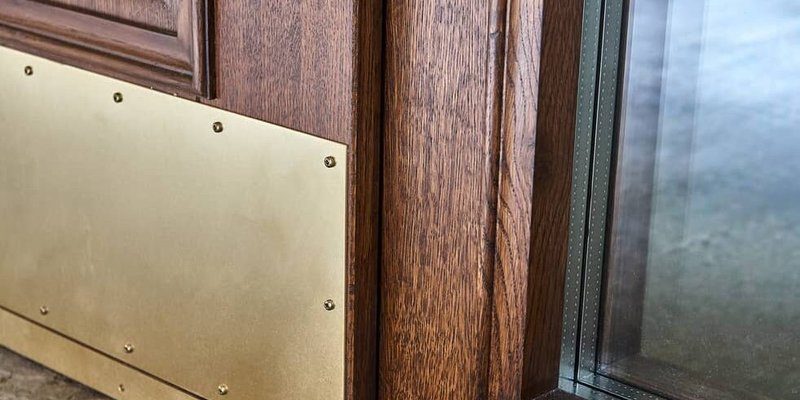
Honestly, it can feel like no matter how much you sweep, the kick plate just loves to gather grime. You might wipe it down, only to find new lint and fuzz back the next day. While this feels like a never-ending cycle, there’s actually a reason behind it—and some easy fixes you can try. Let me walk you through what’s happening, and how to tackle a dusty kick plate once and for all.
Why Does My Kick Plate Attract So Much Dust?
Most people don’t realize it, but the design of a kick plate actually encourages dust to settle. Think about it: air flows naturally along the floor, picking up pet hair, crumbs, and dirt. When that airflow hits the cabinet base, the recessed area of the kick plate becomes a little dust pocket. It’s like the wind hitting a curb—the debris drops out and settles right there.
If you have an appliance, like a fridge with a vented kick plate (say, a Frigidaire or Samsung model), the effect can be even more dramatic. The grill in front sucks in air for cooling, and with it, dust. Over time, this dust builds up and becomes a sticky mess, especially if you have pets or live in a dry area.
Here’s the thing: most of us rarely vacuum or wipe down this area. Out of sight, out of mind, right? But all that neglect means dust just keeps piling up, making the kick plate a prime trouble spot and a silent trigger for allergies.
Common Causes of Excessive Dust Buildup
So, why is your kick plate dustier than your neighbor’s? Several everyday things contribute:
- High foot traffic: Kitchens, hallways, and laundry rooms see a lot of movement. Shoes, socks, and brooms all kick debris under the cabinets.
- Poor air filtration: If your home’s HVAC filter is old or you don’t have an air purifier, dust floats around and settles wherever it can—including that handy little ledge.
- Pets and people: Pet hair, skin flakes, and fur get blown around easily and love to collect in corners.
- Static electricity: Some surfaces, especially plastics or painted metals (like on Whirlpool or Bosch fridge kick plates) can generate a static charge, actually pulling dust in like a magnet.
It’s not just about being tidy—it’s a mix of air movement, static, and everyday living. Even the cleaning tools you use matter. Dry sweeping can kick more dust up, while vacuuming right up to the edge helps trap it.
How Kick Plates on Appliances Make Matters Worse
Many major appliances—refrigerators, dishwashers, even ovens—have removable kick plates or grills at the bottom. While these are essential for air circulation and venting, they’re also prime hiding spots for fluff and debris.
Take a standard GE fridge, for example. Its kick plate acts as both a cover and a vent. Air gets drawn in, cooling system stays happy, but guess what? All the dust from your kitchen floor gets sucked in too. Over time, this can clog up the vent, causing the appliance to work harder, and in serious cases, even overheat.
If you’re troubleshooting why your appliance is running hot or inefficient, a clogged kick plate could be the culprit. Honestly, most people don’t think about cleaning this part regularly—until there’s a problem. It’s just not on the radar like, say, changing a remote battery or resetting a code.
Step-By-Step Guide to Cleaning a Dusty Kick Plate
Here’s how to tackle the problem safely and thoroughly, no matter what brand or cabinet type you have:
- Remove the kick plate: For cabinets, gently pry it off with a putty knife or your fingers. For appliances like a Whirlpool fridge, check for screws or clips and carefully detach.
- Vacuum the area: Use the crevice attachment to suck up all the loose dust, crumbs, and hair hiding under the cabinets or appliance. Go slow—it’s usually worse than it looks.
- Wash the kick plate: Mix a few drops of mild dish soap in warm water. Dip a rag or sponge, wipe thoroughly, then dry. For grills or vented plates, an old toothbrush helps scrub into crevices.
- Wipe surrounding floor: Before reattaching, run a damp cloth along the floor edge to trap extra particles.
- Reinstall carefully: Make sure the plate snaps or screws back securely, without any gaps.
Let me emphasize: don’t use harsh chemicals, especially on painted or plastic kick plates. They can discolor or become brittle over time.
Preventing Excessive Dust Buildup in the Future
Here’s the thing: one cleaning isn’t going to keep dust away forever, but you can make a huge difference with a few easy habits.
- Upgrade your vacuum routine: Vacuum along the baseboards and under the cabinets weekly. Use a brush attachment for vented or textured plates.
- Use a microfiber cloth: Microfiber traps dust with static, instead of just pushing it around. Give the kick plate a quick wipe every few days—seriously, it takes seconds.
- Change HVAC and appliance filters often: Clean air means less floating dust. Mark your calendar for filter changes, just like you would for remote batteries or troubleshooting a code error.
- Consider anti-static spray: For metal or plastic plates, a light spritz after cleaning can reduce static and slow dust buildup.
If you have pets or live in a high-traffic area, you might need to clean a little more often. But trust me, a few small changes make the task way less annoying in the long run.
Kick Plate Design Differences: Cabinets vs. Appliances
Not all kick plates are created equal. A flush, painted wood toe kick on IKEA cabinets will behave differently from a plastic or metal vent on a Bosch dishwasher.
- Cabinet kick plates: Usually made of MDF or wood veneer, these are mostly decorative but do give crumbs a place to hide out. They’re easy to remove, but can warp if they get too wet.
- Appliance kick plates: These typically have vents or grills for airflow. They’re more likely to attract dust because they’re part of the cooling system. Designs vary, but they can be trickier to remove and clean.
If you’re troubleshooting excessive dust on a new appliance, check if the plate is vented. You may have to clean it more often or tweak your cleaning process, especially after a big kitchen project or remodel.
Kick plates aren’t just an afterthought—they actually matter for your appliance performance and your home’s air quality.
When to Worry: Signs of a Bigger Problem
While a little fuzz along the baseboard isn’t a crisis, there are times when dust on your kick plate hints at a deeper issue.
- Huge dust bunnies reappearing constantly: If you’ve cleaned and cleaned again, only to watch dust pile up in days, check your HVAC filter or look for air leaks under your cabinets.
- Odd noises or overheating from appliances: Excessive lint in a fridge or dishwasher kick plate can clog the vent, leading to poor air circulation and mechanical stress.
- Unusual moisture or warping: If you see swelling or water damage, there might be a slow leak or humidity problem drawing in dust and making it stick.
Don’t ignore these signs. Sometimes, a quick cleaning isn’t enough, and you’ll need to troubleshoot with a professional or even take apart the appliance to reset its airflow system.
Other Tools and Hacks for Dust-Free Kick Plates
Honestly, you’re not alone if you dread cleaning under the cabinets. Here are a few clever tricks that make the job easier:
- Compressed air cans: For vented or grooved plates, a quick blast can loosen stubborn particles before vacuuming.
- Flexible dusting wands: These fit in tight spots under the cabinets, so you don’t have to remove the kick plate every time.
- Universal cleaning gels: Sticky gels pick up lint from vents, buttons, even remote codes—without scratching surfaces.
If you’re really serious, adding a narrow strip of weatherstripping behind the plate can help block airflow and cut down on dust collection, though this isn’t recommended for vented kick plates on appliances.
Final Thoughts: Keeping Your Kick Plate Clean Without Losing Your Mind
Dusty kick plates aren’t a sign you’re bad at cleaning. They’re just one of those annoying home quirks—like stubborn batteries in a remote or trying to pair a universal controller with a tricky TV code. Taking a few minutes every week, and using the right tools, can keep kitchen and appliance kick plates dust-free (or at least, close enough that you don’t groan every time you spot a dust bunny).
The key is staying proactive. A bit of troubleshooting up front—checking for airflow issues, resetting your cleaning habits, and upgrading your tools—will save you time and hassle later. Next time you see that stubborn line of dust, just remember: a few swift steps are all it takes to win the battle with your kick plate. Happy cleaning!
